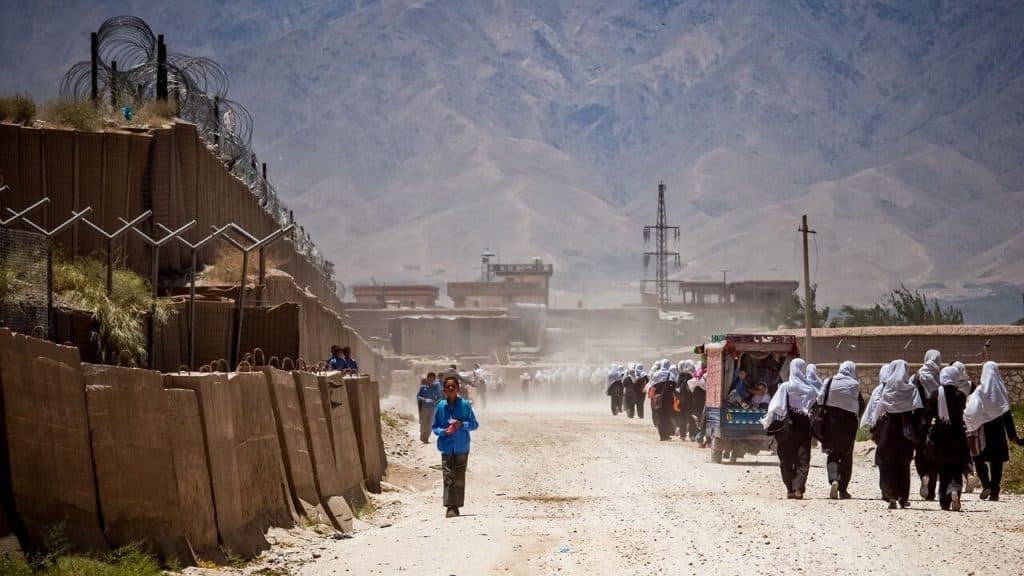Bagram Air Base and the Future of the US Presence in Afghanistan.
In one of his recent speeches, Donald Trump has repeatedly called the hasty withdrawal of the Joe Biden administration from Afghanistan “one of the worst moments in American history.” During his recent trip to London, he also called for the Taliban to return the Bagram base to the United States, warning that if the Afghan caretaker government objected, “bad things would happen.” In contrast, the Taliban considered the idea “unacceptable,” and China has emphasized respect for Afghanistan’s sovereignty.
In his analysis for The National Interest, Natiq Malekzada states that recent positions show that Trump’s main goal in raising the Bagram issue is not just political revenge, but also the restoration of a symbol of American military power and strategic influence in a region that is located between its three major rivals: China, Iran, and Russia.
The report mentions Bagram’s strategic importance: This air base is located about 40 miles north of Kabul and was first built by the Soviet Union in the 1980s. After the US invasion in 2001, the base became the main center of US air and counter-terrorism operations until the Biden administration quietly evacuated it in the summer of 2021.
The National Interest writes: Bagram’s location is unique from a military perspective. From this base, Washington can monitor Iran, Central Asia, West Pakistan, and especially China’s Xinjiang region. In addition to allowing the US to conduct counter-terrorism operations called “Over-the-Horizon” with greater precision, the presence at this base gives Washington geopolitical leverage to challenge China and Russia’s regional connectivity plans – such as the “Belt and Road Initiative” and the “Grand Eurasian Partnership”.
According to this analysis, in the economic dimension, Afghanistan is also at the center of several vital routes that connect Central Asia to the Indian Ocean. China and Russia are expanding their economic influence along these routes. The US return to Bagram could increase the geoeconomic costs for Beijing and Moscow by creating uncertainty in these plans and shifting the balance of power in Washington’s favor.
The report claims that since the withdrawal of US forces, jihadist networks have been reactivated in Afghanistan. Al-Qaeda leaders move freely in Kabul, and the group’s relationship with the Taliban and other terrorist organizations has not yet been severed. In this situation, the US military presence in Bagram could provide the necessary intelligence and operational capacity to counter these threats.
Despite Trump’s willingness to negotiate directly with the Taliban on a return to Bagram, the author warns that such a move would be a dangerous mistake. The Taliban not only have close ties to the above groups, but are also deeply ideologically hostile to the United States. Any security agreement with the group would effectively mean handing over the security of US forces to an enemy that has repeatedly violated its commitments.
Moreover, Bagram is located in Parwan province, which is predominantly Tajik and historically hostile to the Taliban, and has always been a center of anti-Taliban resistance. For this reason, relying on the Taliban to ensure security in such a region is impractical and risky, according to the author.
The report, citing Abdullah Khanjani, a leader of the National Resistance Front of Afghanistan, said that the United States should avoid legitimizing the Taliban and instead ally with resistance forces and local communities. He suggests that the United States use the model of its cooperation with the Northern Coalition in 2001, when it cooperated with local forces to control and use air bases, including Bagram, without the formal consent of the Kabul government.
According to the National Interest, to prevent the escalation of the US conflict in Afghanistan, the United States should focus on partnering with its allies in the country and gradually rein in the Taliban. The United States can provide intelligence, training, and logistical support to anti-Taliban groups in the Panjshir, Andarab, and northern regions while preventing the country from formally breaking up. In today’s circumstances, this is the only path that aligns U.S. counterterrorism goals with the survival of Afghan democratic forces.
The analysis concludes that the real question is not whether Bagram is worth it, but with what partners the United States can gain control of the base in a safe and effective manner.

